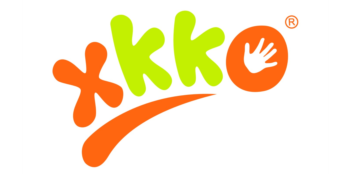Instructions for washing and maintaining reusable nappies
Washing the nappy before first use
We recommend you wash the nappy before you use it for the first time because this increases its absorbency. Products made from synthetic materials, such as PUL (coated with polyester) and micro-fibre, only need washing once. Absorbent fabrics, such as cotton and bamboo (viscose), must be washed at least three times in order to achieve their full absorbance.
The nappies achieve their maximum absorbance after about 10 washes. Nappies and inserts should be dried between each wash.
Selecting a laundry detergent
All nappies can be washed using a laundry detergent containing ecological and germicidal oxygenated bleach. We recommend Ulrich Natur laundry detergent. It is very important to follow the instructions for dosage of the laundry product!
When washing nappies, DO NOT USE
Strongly perfumed laundry products – these additives can irritate the skin
Laundry products with optical brighteners – these additives can irritate the skin
Homemade laundry products
Soap nuts, chestnuts, ivy
We definitely do not recommend use of FROSCH ALOE VERA SENSITIVE laundry detergent, which has been shown as too aggressive in several cases in practice and leads to total destruction of the fabric being washed during long-term use.
Always follow the instructions for washing by the nappy manufacturer!
Which supplements to use when washing nappies and which not to use?
Water softener - YES
Apply a quantity depending on the hardness of the water. We recommend Ulrich de-scaler – add approx. 30 ml to the laundry softener compartment. Neutralises detergent residue and ammonium odour.
Oxygenated bleach – YES
Only add to the wash if oxygenated bleach is not included in the laundry detergent.
Chlorine-based bleach, vinegar or citric acid – NO
These additives can damage the nappies
Fabric softener - NO
Reduces absorbance, not good for the environment.
FROSCH ALOE VERA SENSITIVE laundry detergent – NO
In several cases in practice this has shown to be too aggressive and leads to total destruction of the washed fabric during long-term use.
What should you do with soiled reusable nappies?
1. Remove any content including liners. Biodegradable liners can be placed in the compost. All other liners belong in the communal waste. Never flush liners into the toilet.
2. Rinse the nappies to roughly clean and let them dry if you will be storing them unwashed for an extended period. Store soiled nappies in a closable nappy bag or bucket.
3. Washing
Step 1: Rinsing cycle: 20-30 minute, cold water. Make sure that all the dirty water has been drained from the washing machine when this cycle finishes.
Step 2 : Main washing cycle: Wash at 60 degrees with a strong laundry detergent, wash for about 2 hours, spin-dry at 800 – 1000 revolutions. If necessary, we recommend you use softener or de-scaler to treat your water. It is important to choose a laundry programme with more water than usual (usually identified as WATER PLUS, or EXTRA RINSE). Never select the ECO programme - the washing temperature of these programmes is usually insufficient and they do not use enough water …)
Step 3: This only concerns square nappies. To prevent long-term, slow shrinkage of the nappies, we recommend that you lightly stretch the damp nappies in all directions and shake them out.
Washing temperature
Always follow the instructions of the nappy manufacturer. If you use a temperature higher than the recommended washing temperature, this may damage the nappies. Washing machines and detergents are much more effective today than they used to be, when nappies had to be boil washed. This is why the nappies are clean when washed at just 40 – 60 degrees! If your child is ill, cotton nappies can also be boil washed. However, this is not necessary under normal circumstances and simply reduces the useful life of the nappies.
4. Drying
Extreme heat or freeing temperatures can damage PUL fabric! All products containing PUL MUST NOT be dried under freezing temperatures, on the heating or in the sun.
Cotton nappies can be dried in the dryer using the most gentle programme, if necessary. However, long-term use of this programme leads to excessive shrinkage of the nappies. If possible, dry in the sun or naturally air-dry.
Bamboo nappies and fabrics - MUST NOT BE DRIED IN THE DRYER.
Tips for better and more ecological laundry:
After you rinse the nappies let them dry. Then store them with the other dirty nappies. This is important because bacteria can reproduce in damp nappies.
Wash PUL nappy covers separately. If you do not wash the nappy covers immediately, we recommend you rinse them in water and store in a nappy bag for washing later. This prevents the PUL material from degrading, which is what would happen if urine-siled nappy covers were stored for a prolonged period.
Breast-milk stains disappear under UV light! Simply dry freshly washed and damp laundry in the sun.
Stains can also be treated in advance. Rinse the nappy and treat the stains with gall soap or Ulrich stain remover. Let the stain remover act for 15 minutes, rinse the nappies and leave them to dry.
Avoid extreme heat (next to the water boiler or in the sun) and cold (freezing temperatures) when storing nappies. This could damage the PUL fabric.
Don’t forget to wash the washing machine once a month!

